The XX. century is slowly falling into historical perspective. Looking back from 2024, it is a completely separate era, which is extremely well documented and, thanks to this, contains exciting discoveries and lessons.
Anyone can immerse themselves in them, since the archival materials can be retrieved, in addition to the country’s libraries, also in digital form, without even getting up from the computer. There are plenty of deposits, this is the most extensive Arcanum Newspapers databasewhere 67 million pages of newspapers, magazines, science journals and selected content await explorers.
The Hungarian reality of the eighties, when the Lada 1200 was considered a privilege. (Fortepan/Péter Mujzer)
Taking advantage of this opportunity, we dive into the database of magazines and articles documenting the growing decades of motoring, and see how much the way of thinking has changed over time, or it just proves that everything was better in the past.
In our current review, we explore the topic of the “car of the future” with the help of domestic sources. There are ideas that turn out to be hits and misses.
Aircraft-like design
At the end of the 1970s, thruster airplanes and the American-Soviet space race were the pinnacle of technology, and they wanted to somehow bring cars closer to the world of aviation and modernity. This is reflected in the 1971 Vauxhall study, which even included a manometer, and Élét és Tudomány marveled at this concept in 1971:
“One of the main attractions at the London Motor Show is a Vauxhall car: ‘the car of the future.’ It was not intended for serial production, but many ideas were implemented in it, which they want to use in future models. The “car of the future” has four seats and four doors. Its front seats are fixed, but the distance between the pedals, the steering wheel and the backrest can be adjusted individually.
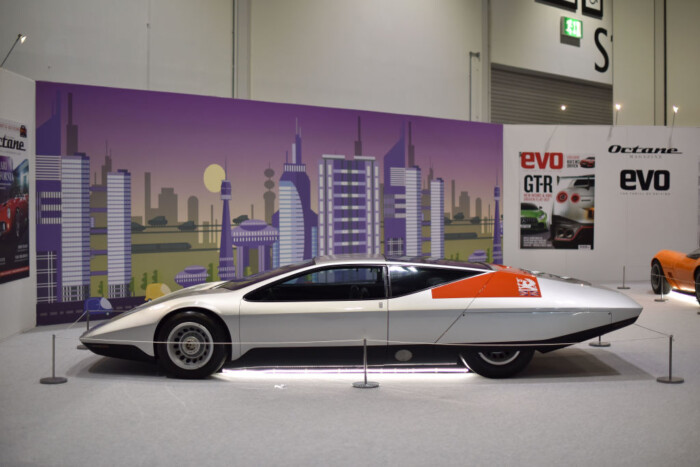
Vauxhall SRV (Styling Research Vehicle) featured in the Hungarian news already as a veteran at a car exhibition in 2017 (Photo: John Keeble/Getty Images)
Its cockpit resembles that of an airplane. It is equipped with several instruments for research purposes, such as a manometer, which can be used to measure the air pressure at various points on the outer surface of the body. It was equipped with data processing equipment for the evaluation of instrumental measurements. The body is made of fiberglass-reinforced plastic. Tubular stiffeners were used around the engine and chassis suspension points. The car is 105 cm high, 194 cm wide and 508 cm long.” – source: Life and Science, January-June 1971 (Volume 26, Nos. 1-26)
Comprehensive ideas from 1984
Ötlet Magazine was based on a comprehensive study entitled “The Future of the Car” by a renowned American university, the Massachusetts Institute of Technology. At the time, the MIT authors envisioned the future of driving like this:
“The introduction of computer-controlled production lines thoroughly dispels the old notion that efficient production requires a series size of at least 500,000. Factories specializing in smaller series can also remain, at most they should strive to cooperate only in the production of economic components in large series – for example engines.
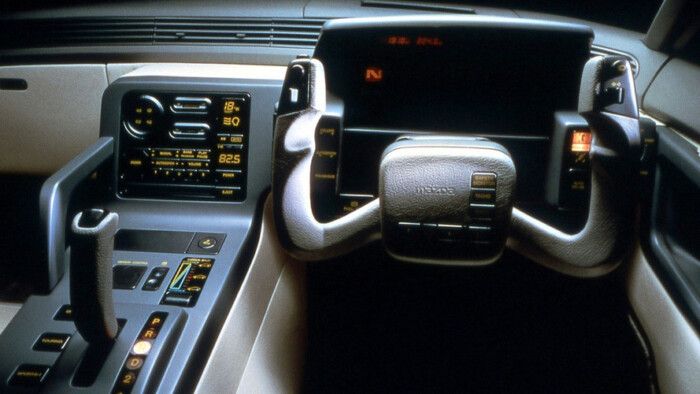
Mazda MX-03 with a radical interior, the Japanese already buried the steering wheel, which has not been replaced since then
New technical solutions disprove the belief that only small cars can save gasoline. In addition, fuel prices are no longer so high that economy determines the mood of customers to such an extent.
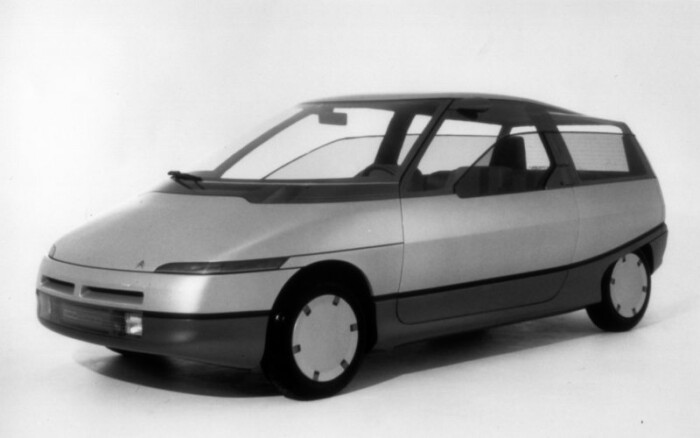
Many people then imagined small, low-consumption, rational cars for the 2000s, but MIT experts already guessed in the mid-1980s that this would not happen. The picture shows the Citroën Eco 2000 concept from 1984. (photo: Citroen)
Motorists do not like “world cars” very much. Different cars are still really cool on the market of each country. It would not be possible to flood developed capitalist countries with a few models from a few factories.
Eastern manufacturers respond to the Japanese challenge by trying to learn what they can. All the more so because the Japanese car industry is slowly taking root in the United States and even in Western Europe. Technical development is therefore faster and faster everywhere. The MIT survey draws the conclusion from all of this that the current line-up of manufacturers will remain largely unchanged until the end of the century. In a peculiar way, parallel to the intensifying competition, the cooperation of factories in certain areas is also increasing.” – Idea, July-December 1984 (Vol. 3, No. 27-52)
The age of small cars that never came
In the mid-1980s, the author of Műszaki Élét reckoned that humanity would make more and more sane and intelligent decisions with technical progress, but this did not happen that way. The preferences of car buyers were not met, the predicted age of small cars did not come, but the author saw the direction of the innovations perfectly.
“We can predict with relative certainty that the passenger car of the 2000s will continue to play a dominant role in traffic. It will run on liquid fuel, and its consumption will be less than today.
Its mass will also be significantly smaller, and its floor area will shrink further, mainly in order to occupy less traffic surface. This is the only way to reduce the saturation of the already overloaded road network.
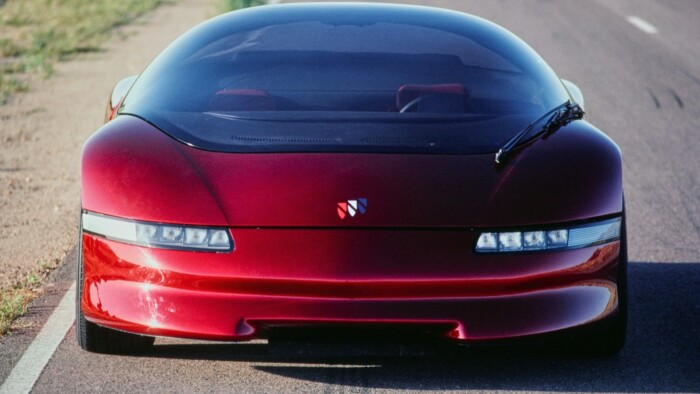
In the eighties, they already saw the importance of aerodynamics, as shown by the Buick Wildcat concept
The requirements for travel comfort, noise reduction and acceleration will increase, while at the same time the environmental impact of cars will decrease significantly. External forms will follow less fashion, rather they will be adapted to function.
Streamlining will be an important aspect, as a car with less air resistance is known to consume less. Concerns that bodies with optimal aerodynamics will ultimately lead to universally identical or deceptively similar cars are unfounded.
The marked difference of the individual car types required by the competition continues to ensure variety. The corrosion status, maintainability and reliability of the cars of the future will also improve.
The smaller footprint of the car will go hand in hand with better space utilization.
In the future, we can consider it typical that instead of long and low bodies, shorter and taller vehicles will become more common. Reducing the weight of the car – which is extremely important due to the reduction of fuel consumption – will mainly be solved by using new materials, plastics and light metals.
More economical operation is primarily achieved by improving the engine and power transmission. But friction losses and the visible reduction of rolling resistance also act in this direction. The engineers working in the development are already talking about the consumption of 3-4 liters per hundred kilometers, with some experimental cars this value has already been achieved.
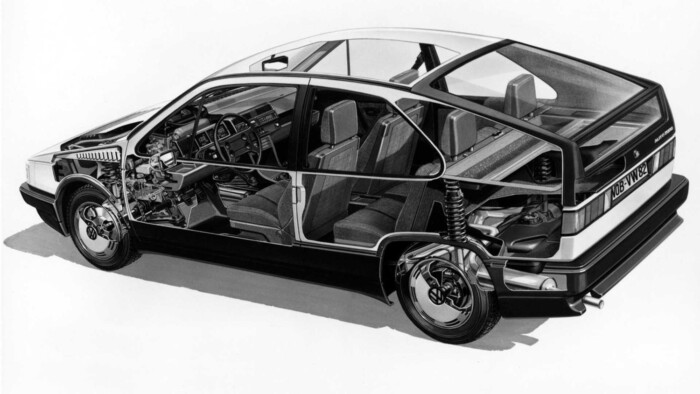
In September 1981, at the Frankfurt Motor Show, Volkswagen presented the Auto 2000 concept, which wanted to show the future in a near-production car. The car required an average of 4.2 liters and could travel up to 1,400 kilometers with one tank.
According to recent experience, the four-valve engine has a high chance of becoming popular, as it provides more power and torque at the same speed, and lower fuel consumption than a two-valve engine.
The car of the future is expected to use electronics on a large scale. Even today, expensive electronic controls enable optimal regulation of mixture formation and ignition. A reduction in equipment prices is a realistic expectation.
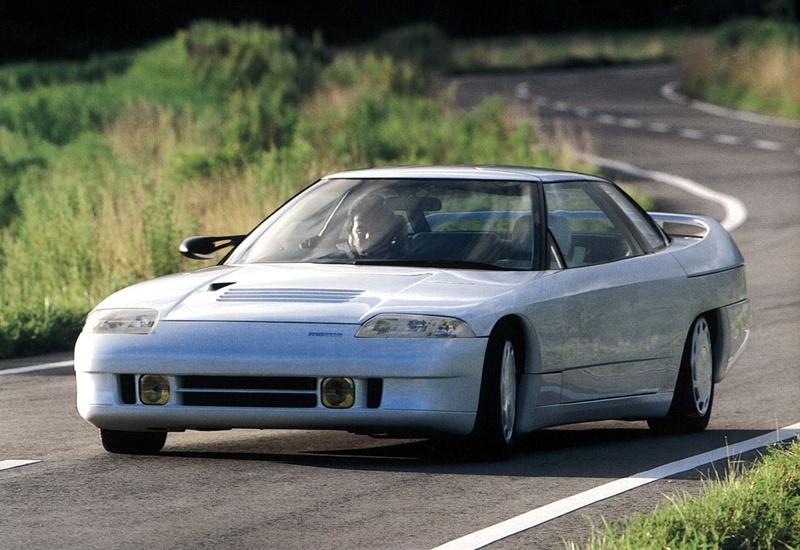
The Mazda MX-03 is a typical prototype from the mid-1980s
It is very likely that in the foreseeable future, electronics will also take over the control of the engines, namely in the case of new, gearless, automatic engines.
In these cases, the gear ratio will continuously adjust to the most optimal and economical speed in terms of the engine’s operation.” – Technical Life, January-June 1985 (Volume 40, Nos. 1-13)
Source: www.vezess.hu


